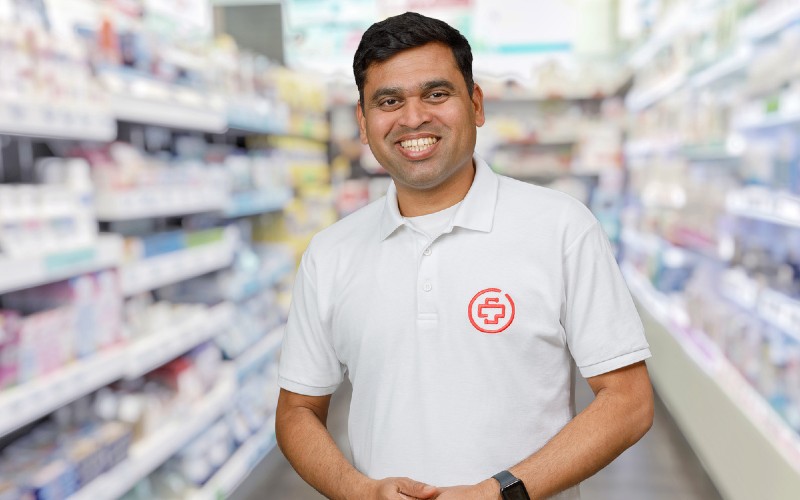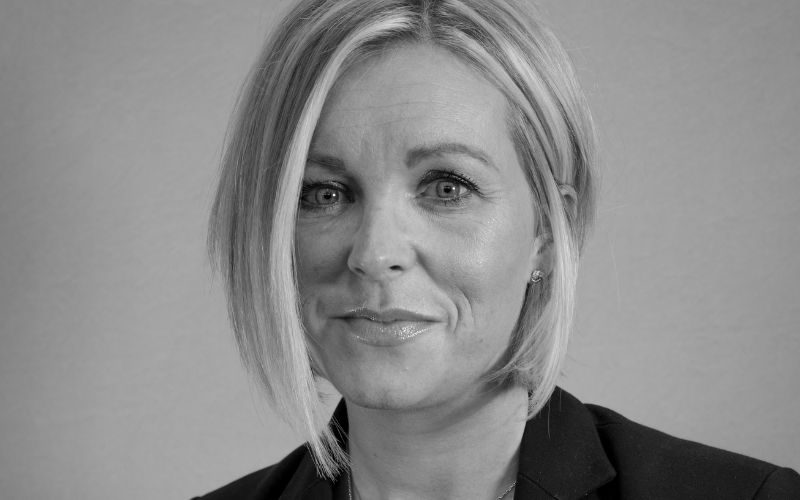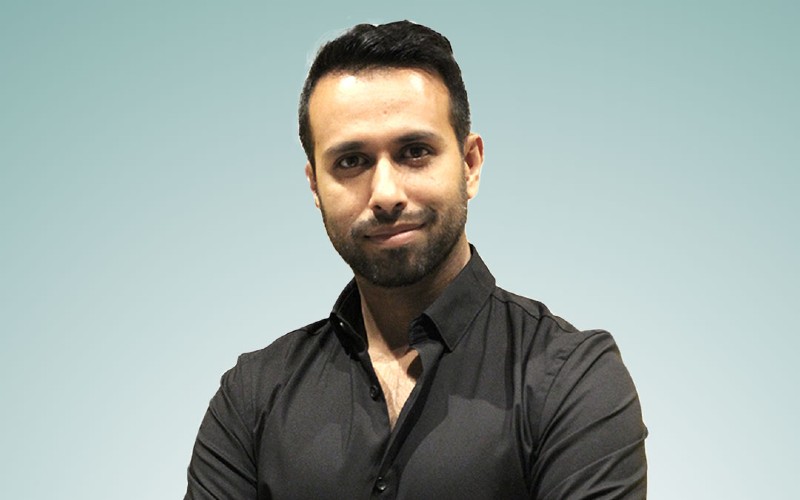Welcome to our HealthTech Insights report for 2024.
Published alongside our annual HealthTech 50 ranking, the report quantifies and reflects technology trends in healthcare.
After our readers and an expert judging panel together decided the UK’s most innovative startups, scaleups and established technology firms serving the sector, we canvassed views from the companies.
Trends
We asked the HealthTech 50 and judging panel to describe a particular trend they have noticed in HealthTech in the last year.
Santosh Sahu (pictured below) is CEO of London-based Charac, which digitally empowers independent community pharmacies to deliver more private services. He says artificial intelligence has begun to penetrate healthcare in the same manner as other sectors – but more slowly.

“AI implementation in the healthcare sector has been limited in the past 12 months, largely because healthcare remains far less digitised compared to other sectors,” he explains. “Pharmacies, hospitals and healthcare professionals continue to rely on outdated paper records, and a lack of open API systems prevents effective communication and limits response times.
“While AI can certainly prove beneficial to this sector, this can only occur if the sector first embraces digitisation more widely.”
Hammad Ahmed, CEO of Longlive – also based in London – says AI is being adopted into wearable devices: “Smartwatches, fitness trackers and biopatches, have evolved beyond simple activity monitoring to provide comprehensive health insights.
“They now feature capabilities such as continuous heart rate monitoring, blood oxygen level measurement, sleep pattern analysis, and even stress level detection.”
Ahmed’s startup offers wearable technology and a supporting app for proactive health management. “The integration of AI and machine learning algorithms allows these devices to analyse collected data in real-time, offering personalised health recommendations and early warnings of potential health issues.
“For instance, AI can detect irregular heartbeats or predict potential cardiac events, prompting users to seek medical attention before a condition worsens…. saving a lot of doctor visits and crossing the critical health threshold.”
He adds: “The development of smart pills and ingestible sensors represents a cutting-edge innovation in personal healthcare. This trend not only empowers individuals to take a proactive role in managing their health but also enhances the precision and effectiveness of preventative care, reducing the burden on healthcare systems and improving overall health outcomes.”
Judge Lucy Moore (below), director of strategy and partnerships at Refresh – a creative-led PR and marketing partner to brands – says health-focused wearables originally gained traction in the fitness community but are now becoming much more commonplace elsewhere.

“Over the past few years, these types of devices have become much more accessible. Relatively cheap smart-watches can now track our steps, our sleep, our heart rate, and our overall health. And this is just the start,” says Moore.
“Bespoke nutrition trackers such as Zoe – which tracks how different foods impact your body – have really taken off over the past couple of years. Indeed, taking ownership of one’s health has definitely become more important post-COVID.”
Liz Ashall-Payne (below) is CEO of Daresbury scaleup ORCHA, short for Organisation for the Review of Care and Health Apps. For almost a decade ORCHA has assessed apps for safety, accuracy and efficacy.

Liz Ashall-Payne
“I’ve seen a shift from seeking single-point solutions to integrating digital health technologies along comprehensive care pathways,” says Ashall-Payne. “This approach reflects a broader, more holistic strategy where multiple technologies and services are combined to enhance patient outcomes, streamline care delivery and improve overall health management.
“Digital health technologies are now being implemented in a more integrated manner, aligning with the entire patient journey rather than addressing isolated issues where health apps offer personalised health advice, medication reminders, and mental health support.”
What’s next?
As for a trend they hope to see in the coming 12 months, judge Charlotte Lewis (below), principal associate – commercial health at law firm Mills & Reeve, points to better utilisation of data, digital and technology to tackle some of the big problems facing the health and care systems within the UK.

“Common themes exist across the four nations – long waiting times, depleted workforces, increasing ageing populations and crumbling social care,” she expands. “Technology already exists to support in many of these issues, as evidenced by those in the HealthTech 50 list.
“Getting this technology deployed at scale is the challenge. My hope is that the new government will make this a priority. Listening to Andrea Pritchard, CEO of NHS England at ConfedExpo in Manchester in June, she acknowledged the NHS needed to ‘go further’ on reform by embracing technology and innovating.”
Indeed both the incumbent Conservative government and opposition Labour Party have promised to drive technology adoption in healthcare in their manifestos for the upcoming general election.
Labour general election manifesto pledges to ‘drive innovation’
With independent health think tank the Nuffield Trust questioning whether either will be able to deliver promised improvements in the NHS with the spending increases they have allocated, it is obvious why technology is central to their respective visions for improving efficiency, preventing conditions before they occur and effective treatment at home.
“I have always believed in proactive health management as a solution to the rising health inequity problem, which is a serious global issue,” says Ahmed (below). “By next year, people will proactively manage health with personalised insights, focusing on tailored exercise, nutrition and chronic disease prevention.

“They’ll use apps, wearables, and connected devices for monitoring, and embrace vaccines, genetic testing, and wellness therapies. Virtual health coaches and digital twins will support behavioural changes and preventative care.
“I also foresee governments prioritising public health with increased funding and robust infrastructure… I feel that healthcare will eventually adopt a digital-first model, directing patients to the best care settings. Primary care networks will manage health needs with a patient-centric approach.”
With NHS waiting lists still over seven million, Sahu expects to see more pharmacies begin to take on the duties of the NHS and GPs, “much like they did with Pharmacy First earlier this year”.
“An effective role out of Pharmacy First will prove that pharmacists are prepared for a new wave of responsibility and encourage them to take on a more proactive role in the healthcare process,” he adds.
“Consequently, NHS waiting times will decrease, contributing to significantly improved preventative healthcare and greatly boosting the revenue for pharmacies, which have been forced to close on a large scale since 2017.”
Josh Hough (below), managing director at fast-growing cloud-based home care management platform CareLineLive, expects to see more software providers trying to link AI into the home care space.

“Whilst I see AI as being an incredibly valuable asset, we must not overlook the fact that ultimately care is still based on people,” he warns. “If we rely on AI to do too much, we lose the person centred care approach that the CQC (Care Quality Commission) is aiming for.
“AI will never, in my opinion, be a replacement for a human having at least a final check.”
Ashall-Payne anticipates a significant increase in the use of health apps along patient pathways, driven by the need for more integrated, personalised, and efficient healthcare delivery.
“Health apps will play a pivotal role in enhancing patient engagement, improving care coordination, and enabling real-time health management,” she says.
“Health apps empower patients to take an active role in managing their health – tracking health metrics and providing educational resources – as well as improving care coordination, allowing for personalised health monitoring and planning, mental health support, and access to therapy and counselling.
“They can lead to improved health outcomes, cost savings and efficiency.”
A democratising force?
Is technology democratising access to healthcare effectively, in the view of the HealthTech 50 and our judges?
“Inequalities have plagued health and care since before the creation of the NHS. Tackling these inequalities is now one of the three objectives of all Integrated Care Partnerships across England,” says Moore of Refresh.
“The advent of HealthTech has created a space where access to and quality of care can finally be democratised. There are several ways this is already happening: telemedicine, for instance, has expanded healthcare access to remote and seldom-heard populations, allowing patients to consult with healthcare providers via video calls.
“Mobile health apps are making it easier for people to access medical information, track their health metrics, and communicate with doctors. This is especially useful for those whose English is not their first language.
“Health monitoring devices are becoming more affordable, meaning more people can monitor and manage their health conditions in their own homes, without needing frequent visits to healthcare facilities. However, it’s crucial that access to high quality tech isn’t something only the wealthy can afford.”
Fellow judge Lewis of Mills & Reeve says that when technology works well, it can have a positive impact on access to healthcare.
“Virtual wards, telemedicine, patient portals, community diagnostic centres are all playing a key role in democratising access to healthcare,” is her view. “NHS trusts are all in the process of digitising and, where the implementation of these digital transformation programmes is successful, it will improve both the clinician’s and patient’s experience as well as drive efficiencies, freeing up clinicians’ time to see more patients.
“It is important to remember that not everyone wants or can access healthcare through technological means. So there should always be a choice. But provided there is and the technology works well then yes, I do believe that it can democratise access to healthcare effectively.”
Hough says access is being widened “to a point”, adding: “With the ever increasing burden on the healthcare system, whilst technology may have originally helped, I think it can also now be hindering.
“At the end of the day there are only so many hospital beds and procedures take a fixed amount of time that technology can’t necessarily halve. So as technology helps us diagnose people quicker, the bottleneck still remains with human ability.
“We have seen CareLineLive’s technology helping in exactly this scenario: working with Mid and South Essex NHS Foundation Trust we have been able to free 60 beds per day of patients that would otherwise remain in hospital awaiting discharge.
“It is up to the NHS and social services that commission reablement care to better embrace the opportunities that technology offers to address these challenges.”
Sahu says technology in the UK is failing to democratise access to healthcare, which he puts down to HealthTech companies’ “sense of protectionism and unwillingness to cooperate”.
“This is part of why closed APIs are still so heavily relied upon in the sector, but this also prevents democratic access to technologies which would help encourage further innovation and advancements. Democratising access to healthcare can only be achieved through greater intervention from regulators, such as the government and NHS, paralleling the development of FinTech in the UK.”
Ashall-Payne and Ahmed sound a more positive note, with the former stating: “Technology is making healthcare more accessible, affordable and efficient. Patients in remote areas are able to receive medical care without travelling; patients can get medical advice, follow-up care and order medications from home; they can now monitor health metrics and manage chronic diseases; and access educational resource for information on health conditions and treatments.”
Ahmed echoes those views, adding: “Electronic health records streamline patient data management, improving care coordination and reducing medical errors, while health information systems use data analytics to track public health trends and inform policy decisions.
“Despite challenges like the digital divide, data privacy concerns, and the need for system interoperability, technology is significantly democratising healthcare by breaking down geographical, financial, and informational barriers.”
Oral cancer prevention firm LightOx plots Manchester expansion
Collaboration
Neither CareLineLive’s Hough or Ahmed of Longlive believe the healthcare sector is becoming more joined-up thanks to tech-enabled collaboration. “Technology offers so much potential for joined-up working but the public is risk averse and slow to change,” says the former.
Moore says one of the biggest barriers to effective healthcare delivery is a top-down legacy model.
“Not only is it more diffuse at the top with organisations like NHS England and the Department of Health and Social Care – and others – having to work to set national agendas, but as local and regional bodies become more autonomous they, rightly, demand more influence and power in how services are run.
“That does not, however, ensure the joining up of the healthcare sector; in fact, it can make it even more challenging if access and understanding of tech isn’t shared by all. Collaborative platforms can facilitate better partnerships between various stakeholders across key hot-spots such as the primary and secondary care intersection, and bring in academic institutions and tech companies too, but it’s not a silver bullet.
“Several failed tech-roll outs across the healthcare sector can attest to that. Areas where tech could help, however, include the speeding up of processes, the planning of services and the overall quality of delivery, not to mention the budget savings that could come with these efficiencies.”
Charac CEO Sahu says the potential for the healthcare sector to become more joined-up exists, but is not currently a core focus for businesses and regulators.
He adds: “Collaboration between companies within the market is not widely practised, and the technologies which would help encourage further collaboration are still in their infancy. Consequently, the healthcare sector can only become more united by moving away from its current emphasis on protectionism and finding common ground.”
Lewis says she became interested in HealthTech due to the opportunities collaboration and integration could create – with data, digital and technology the enabling force.
“Health and care data is now being brought together thanks to shared care records – ensuring that a clinician has the full picture rather than just part of it,” she offers as an example of how this is taking shape. “Taking this one step further, secure data environments will provide data sets that can be used for research purposes which should drive continued improvements in both services.
“Virtual wards are using technology to enable patients to be treated in their own home rather than in hospital. The NHS App is intended to be the ‘digital front door’ to the NHS.”
Ashall-Payne of ORCHA is seeing a more joined-up approach, adding. “While challenges remain, the continued advancement and adoption of collaborative technologies hold great promise for the future of healthcare.”
Funding & recruitment
How are our HealthTech 50 firms finding the current situation with fundraising and recruitment?
Ashall-Payne answers: “The fundraising landscape is more challenging; however this is a continuously evolving picture, driven by technological advancements and changing investor priorities.
“Success in this environment requires a multifaceted approach, including leveraging diverse funding sources, staying abreast of industry trends, building robust networks, and being prepared for rigorous due diligence. While challenges exist, the opportunities for innovative projects to secure funding are still there.”
Sahu says: “In the UK, the approach to fundraising is relatively more conservative, and this limits real progress as several ambitious startups end up in competition for relatively limited funding. If we wish to improve the health tech sector, we need a more ambitious and open funding landscape, which parallels regions such as Silicon Valley.
“By democratising the market and improving access to innovative new technologies, more opportunities will become available for startups and companies, which will lead to wider HealthTech progress. Such success will lead to greater confidence from regulators and investors, which will provide the conditions for a more competitive and effective healthcare system overall.”
Hough says the recruitment market is “tough”.
“It had got easier, but the snap election has unfortunately caused more uncertainty. Whilst a Labour government will (theoretically) be great for the healthcare system, and potentially CareLineLive, the uncertainty that brings to HNWs (high net-worths) who typically invest in businesses like ours is huge.”


